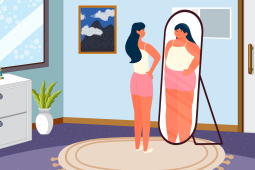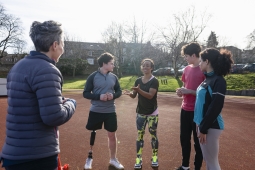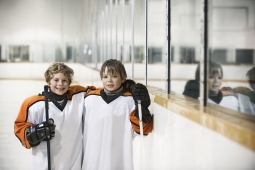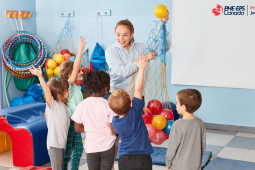Nervous System Regulation in the Classroom
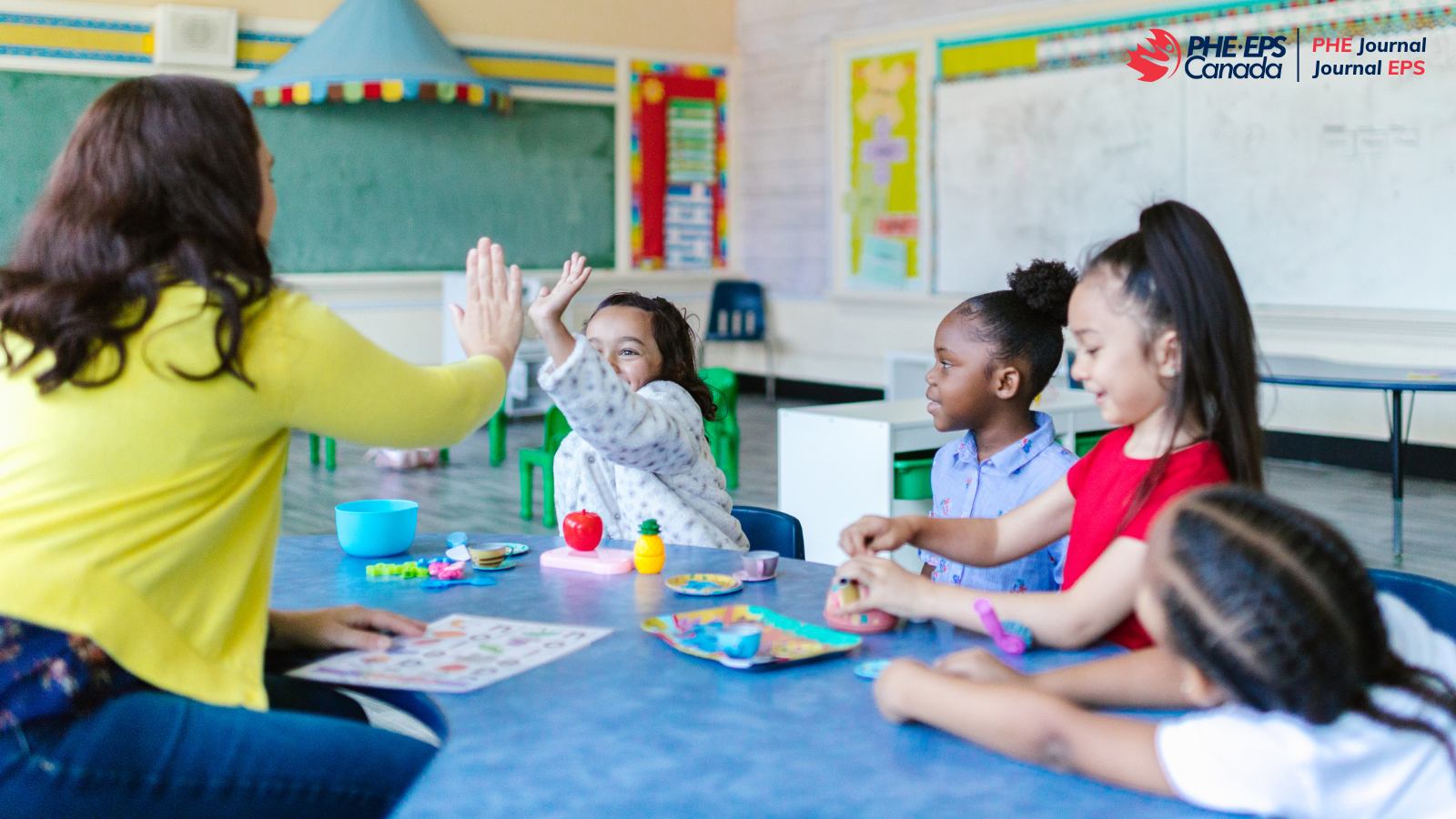
Keri Albert, an elementary school teacher in Saskatoon, has taken a great interest in learning about nervous system regulation. She shares her knowledge not only with her class but fellow teachers across Canada. PHE Journal had the pleasure of interviewing Keri to talk about why nervous system regulation is important for teachers and how PHE teachers can help their students regulate their own nervous systems.
Q: To start, can you please share how you became interested in nervous system regulation?
I’ve been a classroom elementary school teacher for 28 years. I started to notice before the pandemic, and especially during, that my own ability to “roll with the punches of life” was not the same as it had been before. I noticed that I was more irritable, had more trouble sleeping, and felt anxious or “thrown” by things that I wouldn't previously have felt anxious about.
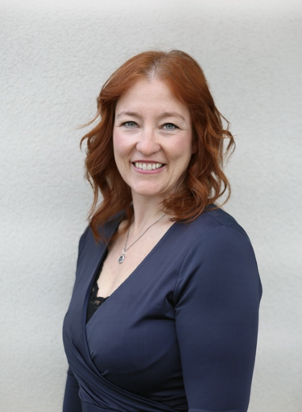
I started to get really curious about why that was, and what was happening in my own body and brain to cause this experience. Through my own reading, listening to podcasts and research, I learned about my nervous system. It really resonated with me because I often would feel like I have one nerve left, and people are getting on it.
I learned about trauma and began to understand that most people do experience some form of trauma. Trauma is something that happens too fast, too soon, and too quickly, and we don't have a way or anybody to help process that. Many things happened to me when I was a child that my body stored up and led to me having triggers or sensitivities that my logical brain couldn't understand. That was helpful to learn about as well.
Q: What does it mean to regulate one’s nervous system?
Regulating our nervous system is finding ways to bring our brain from a triggered, fight, flight, freeze, fawn state back online so that we can access our prefrontal cortex and our logical thinking brain and make good choices for our behaviour and dealing with a situation.
What happens when we get “triggered” or “activated,” is that the amygdala, the oldest part of our brain which is sometimes called the lizard brain or the “security guard” as I tell my students, flips. I also say “our lid gets flipped.” We get sent into a very old autonomic response which is, “Oh, my gosh! Something dangerous is here!” even if it may not be, and we feel we need to respond and react to this right now.
Q: What are some ways a teacher can recognize when they're becoming dysregulated?
When we’re activated, we notice a lot of things happening. Physically, it could be different for different people, but some of the common ones are:
- Raised shoulders
- Increased heart rate
- Shortness of breath
- The body tenses
- Sweating
- Aches and pains
- Numb or tingling fingers
- Inability to move (legs feel heavy)
- Fatigue
When we're in that state, we cannot logically think our way through a situation. So, to get our brain online, we have to be able to relax. When our nervous system is switched on, this is called hyperarousal. That's when we are in fight, flight, or fawn and our energy is high and we can't settle. We're buzzing.
The other end of the spectrum is hypoarousal. This is where we can't do anything. We literally freeze. So, what we have to try to do is find ways to relax so we can get back into the middle ground. Students and teachers cannot logically think through their behaviour when they are either in hyper or hypoarousal.
Q: Why is nervous system regulation so important for PHE teachers and students?
It's really important for teachers because we are with kids who come with all sorts of invisible backpacks. I like the “invisible backpack” metaphor because we don't know what students are carrying. We don't know what adverse situations or experiences those children have had. They may be dealing with neurodivergence, or they may be living with different things going on in their bodies.
I like to think about kids as a treasure map, following their lead and learning about them. Letting them reveal to me who they are and what they need. However, in order for me to be able to follow kids and to be present with this idea of a treasure map, I have to be able to calm myself down when I'm low on resources and I'm struggling.
This is super important in the classroom. Kids need to know that they have all the tools they need to help themselves within their own bodies. We all have breath. We all have a voice. We all have the capability to do some movement. And so those three tools are critical in nervous system regulation. We don't need anything special.
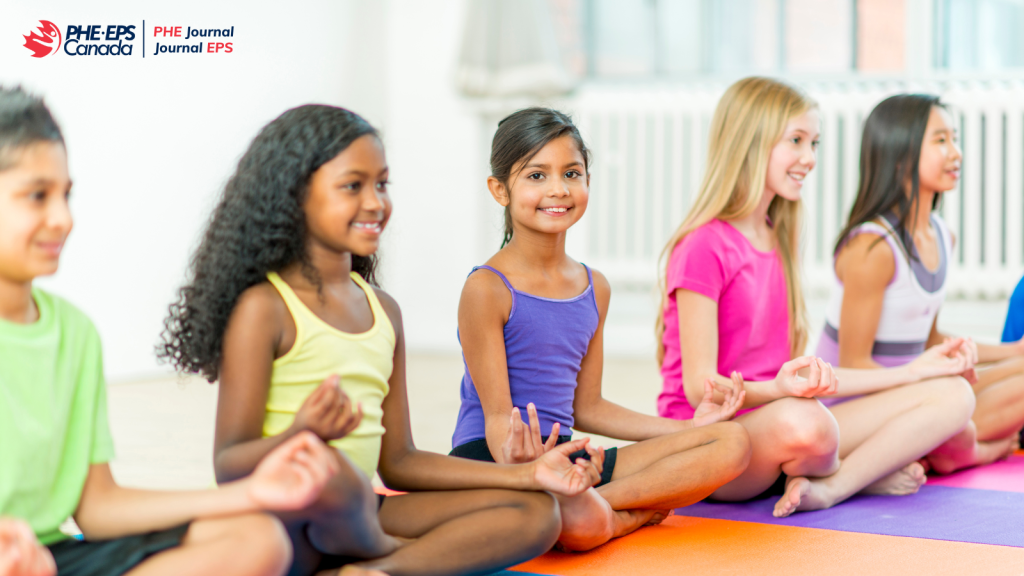
Q: What are some activities that PHE teachers can do for themselves and their students?
Managing our own emotions is essential for creating a supportive classroom environment. Over the years, I’ve discovered a few effective techniques to regulate the nervous system, both for myself and my students:
- Box Breathing: Learn a few breathing techniques that you can keep in your back pocket. One of the good ones that I know is called box breathing. As a teacher when I'm walking somewhere I will do box breathing. If I have a minute of quiet, I will do box breathing. I can calm myself down effectively and quite quickly, just by doing that.
- Bee Breath: Another technique that is very good for anyone is called bee breath. It's simply inhaling through your nose and then humming slowly as you exhale. It's especially good because, if you're hyperaroused, it can bring you back down. If you're hypoaroused it can stimulate you to come back up.
- Taking a walk: I know everybody will think that this is cliché, but it really does work. Getting out of the situation and getting into the body for 2 to 5 minutes can really help. Sometimes in my classroom if my NS is not regulated, I will say to the class, “I need to step out of the room for 5 minutes to walk to the copy center and get something from the copier and come back.” A teacher can get a neighbour to cover their class while they step out.
- Shaking: Go somewhere where no one can see you and just jump up and down and shake your body for about a minute. That will move that energy around and help you get back into a calmer state.
- Therapy: I think therapy is extremely important and seeing a therapist regularly because we have benefits as teachers. It has been a really valuable tool for me. So, for teachers and students’ families, I often will recommend accessing some therapy.
Q: Do you have any words of advice for PHE teachers who may feel a little hesitant about using these activities with, or in front of, their students?
Don't give up on it. Even if it feels awkward or a bit uncomfortable, remember that we all have the tools in our own bodies to be able to help ourselves. This is critical for us to teach our students. If I'm uncomfortable with the language around something, I look online for videos. I look for other professional resources that are geared towards kids. There are many Youtube videos and other resources that I share, like infographics, instead of me doing weird demonstrations at the front of the classroom.
Teaching these practices to students is important because everybody needs to know about their own brain at any age. It's even helpful for adults. It's a great reminder for a staff meeting. I would not give up on this. From there, just the simple statement: In order to make better choices, we need to be calm. I think that statement validates this practice and gives it weight that the kids might need to hear to take it seriously.
Another powerful tool is asking kids themselves, because tons of kids have gone to classes on worry and anxiety, or they have gone to therapists and know different breathing techniques. My class has come up with lists of 20 or more breathing techniques because the kids have learned so many different ones.
Q: What message do you want PHE teachers to take away?
I think it's far better to recognize the signs and to take the little breather that's needed than to flip your lid and lose track of how you're reacting, how you're talking to your students, and then ending your school day feeling terrible about having lost it. We all have the tools within ourselves. We just have to remember and practice using them. It’s a lifetime of practice, but I love being able to share the idea with students that our brains can rewire themselves. The wonder of the human brain and the gift of learning about it can be really inspiring for people of any age.
Additional Resources:
- IGen Podcast (available wherever you access your podcasts)
- TeachResiliency
- kerialbert.ca
- TREEmendous Empathy (pinterest.com) A resource for teachers to share with their students to open the discussion about emotions
- Window of Tolerance
- Dr. Dan Siegel’s Hand Model of the Brain
- Dr Steven Porges’s Polyvagal Theory
- ATTCH Niagra
- Dr. Gabor Mate - Trauma





